Scania DC09 PDE. Industrial engine. Operator’s manual - part 5
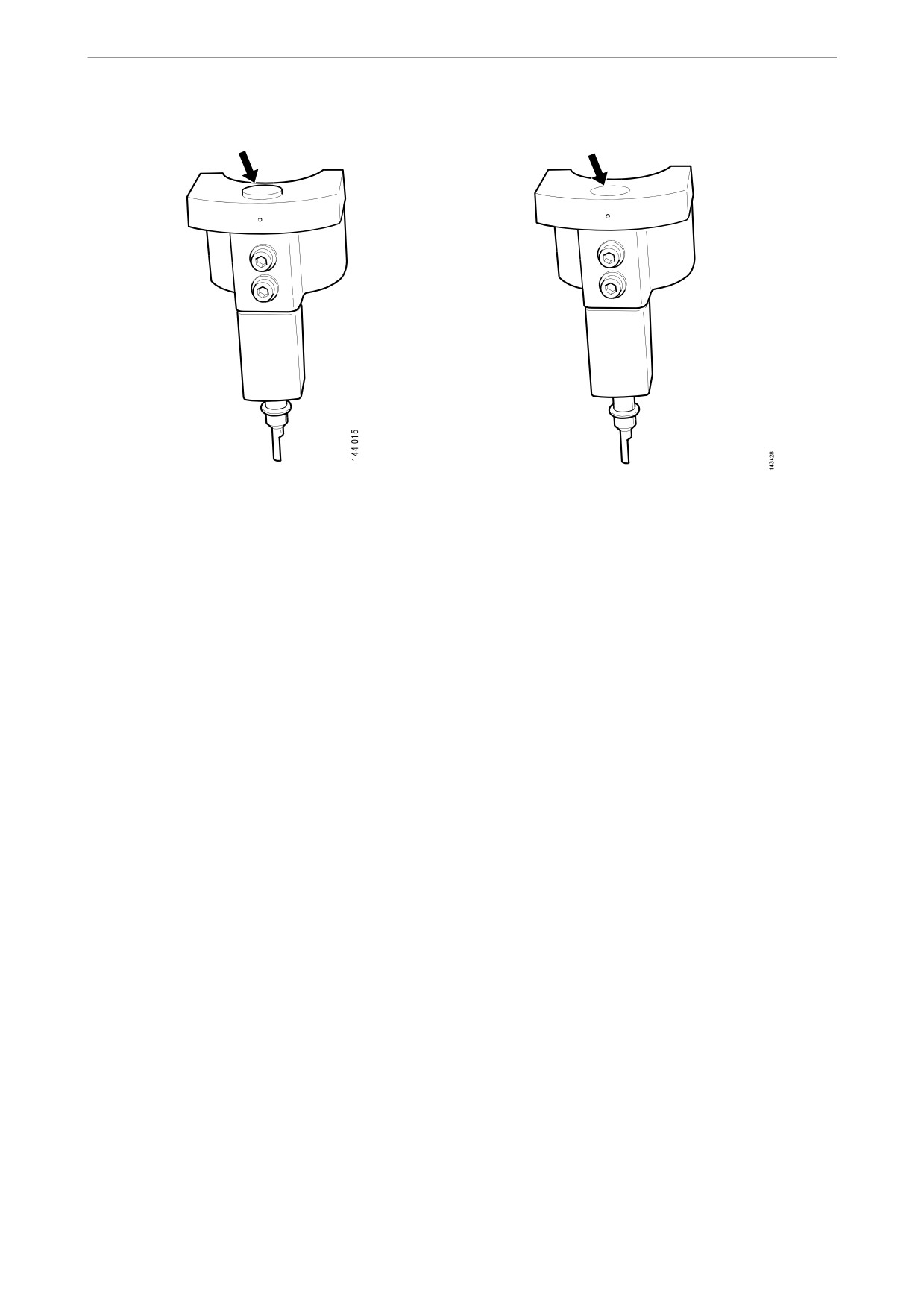
Other
The setting tool piston is above or below the flat
The setting tool piston is level with the flat upper
upper surface of the tool. Adjust the unit injector. surface of the tool. The unit injector is correctly
adjusted.
64
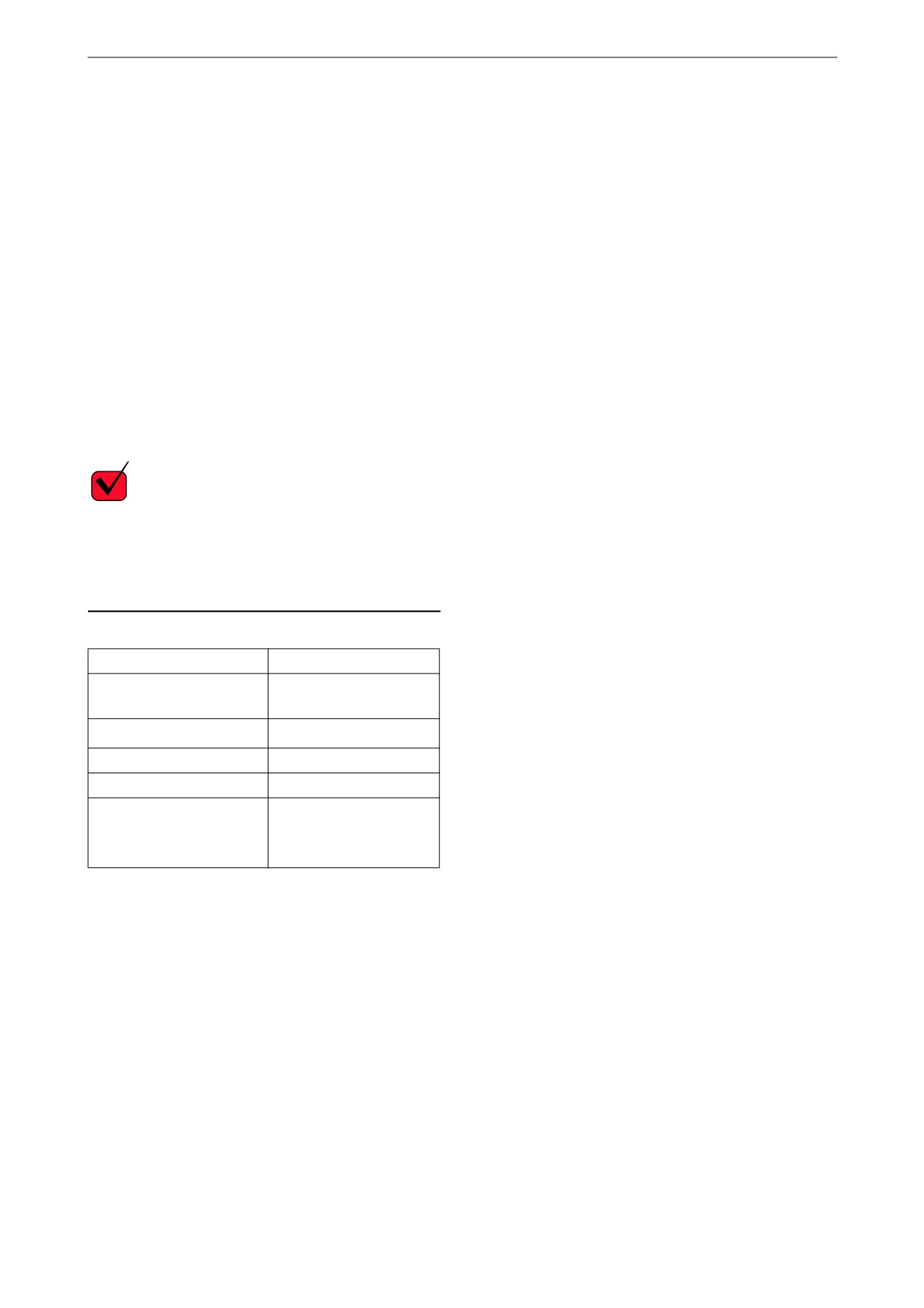
Quality requirements for fuel
Quality requirements for
fuel
Quality requirements and testing standards for
the most important properties of different types
of fuel are described in the Workshop Manual.
This can be ordered from Scania dealers or di-
rectly from Scania.
Diesel
Properties
The quality of the diesel is very important for the
operation and service life of the engine and the
fuel system, and also for the engine performance.
REQUIREMENT!
The diesel should comply with the requirements
of European standard EN590.
However, Scania accepts larger tolerances of
certain properties. Please see the table below.
Property
Requirements
Viscosity at 40°C
1.4-4.5 cSt
(104°F)
Density at 15°C (59°F)
0.79-0.87 kg/dm3
Ignitability (CET rating)
minimum 49
Lowest flashpoint
56 °C (132 °F)
Particulate contamina-
Classification 22/20/17
tion level
according to ISO 4406
65
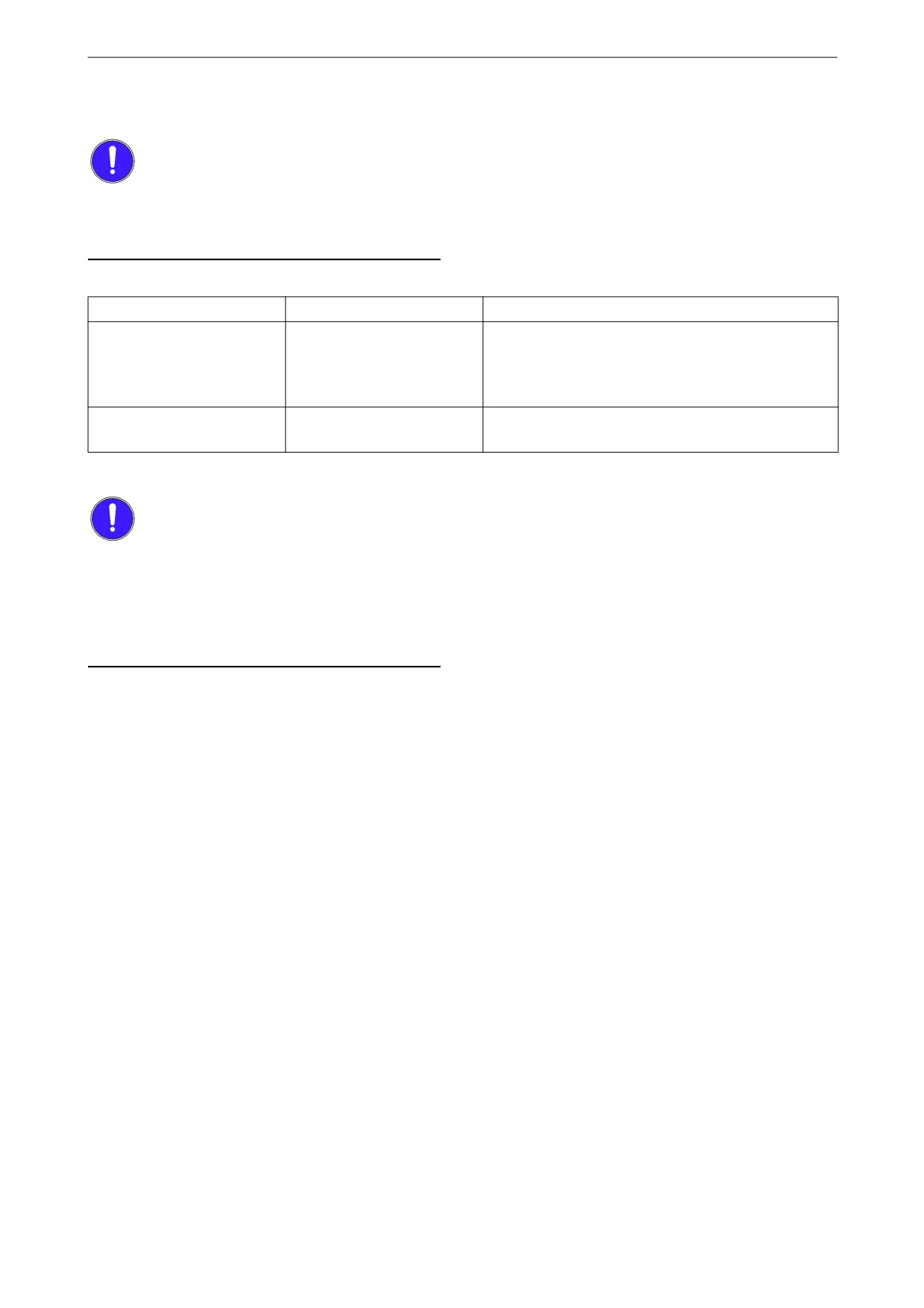
Quality requirements for fuel
Permitted sulphur content in diesel
IMPORTANT!
The operator is responsible for using the correct
type of diesel to ensure that local laws are com-
plied with.
Engine type
Max. sulphur content
Note
Engines without EGR sys-
4,000 ppm (0.4 %)
If the sulphur content is higher than 2,000 ppm, the
tem
oil change intervals must be halved. A higher sul-
phur content than 4,000 ppm is not permitted, since
this will result in engine damage.
Engines with EGR system
350 ppm (0.035%)
If diesel with too high a sulphur content is used,
this causes engine damage.
Temperature dependence of diesel
IMPORTANT!
Mixing kerosene or other paraffins with the die-
sel is prohibited. The injectors may be damaged.
It is not permissible to mix petrol with diesel. In
the long term petrol can cause wear in the injec-
tors and engine.
At temperatures lower than those specified for
the diesel, paraffin wax may precipitate from the
diesel and block filters and pipes. The engine can
then lose power or stop.
The diesel is adapted for use in the specific cli-
mate of each country. If an engine is to be oper-
ated in a temperature zone with a temperature
lower than normal, first identify the temperature
properties of that particular diesel.
66
Quality requirements for fuel
HVO
Maintenance intervals
HVO is a synthetic diesel which is manufactured
through the hydrogenation of plants and animal
IMPORTANT!
fats. To the user, HVO is reminiscent of diesel in
accordance with EN590, apart from HVO having
Make sure that maintenance intervals are differ-
a somewhat lower density.
ent when operating on diesel or biodiesel.
Scania approves the use of up to 100% HVO for
all engines in accordance with the European
With a greater mixture of biodiesel than 10%, the
standard EN 15940.
renewal intervals for the following are halved:
• Fuel filter.
Use of fuel oil in stand-by
• Oil filter.
generator sets
• Engine oil.
Long-term storage of diesel, where the diesel
comes into contact with water, may lead to the
The viscosity grade of the engine oil should be
growth of micro organisms (bacteria and fun-
xW-40. xW-30 grade oils are unsuitable due to
gus). To avoid this in fuel used in stand-by gen-
the fuel dilution effect.
erator sets, Scania permits the use of fuel oil
The engine oil level must be checked regularly.
according to DIN 51603-1 and
If the oil level exceeds the maximum level, the
ÖNORM C 1109.
oil must be changed.
Use of fuel oil is only permitted for stand-by
generator sets and under the following condi-
Storage of biodiesel
tions:
IMPORTANT!
• The fuel must not be stored or used in temper-
atures under -10°C (14°F).
Biodiesel must not be stored for more than 6
• The engine must not be equipped with an
months.
SCR system.
Biodiesel (FAME)
Biodiesel has a maximum storage life of
6 months from the date of production to the ex-
Use of biodiesel
piry date. The fuel is affected by light, tempera-
ture, water, etc. during storage, which affects the
Scania uses the term biodiesel to refer to a re-
fuel characteristics and durability.
newable diesel made from greases or oils and
methanol. The biodiesel should conform to the
Biodiesel also has lower stability against oxida-
requirements of European standard EN 14214 or
tion than diesel. This can result in a thickening of
Brazilian standard ANP-45. For biodiesel in ac-
the fuel and blocking of parts of the fuel system,
cordance with EN 14214 or ANP-45, the generic
e.g. the fuel filter. Bacterial growth can occur
term FAME is frequently used.
when fuel is stored in tanks under unfavourable
conditions. Avoid storage in barrels or auxiliary
Normal diesel in accordance with EN 590 can
tanks, except when fuel turnover rates are high.
contain up to 7% biodiesel from the diesel sup-
Check tank cleanliness whenever refuelling
plier. There are grades of diesel that comply with
takes place.
EN 590 but contain a higher mixture of biodies-
el.
If the engine has been refuelled with biodiesel,
and is stationary for a long period, condensation
For PDE engines, Scania approves the use of up
water can form in the fuel tank resulting in bac-
to 100% biodiesel in accordance with EN 14214
terial growth.
or ANP-45.
See also the section Preservative fuel.
67
Preparing the engine for storage
Preservative coolant
Preparing the engine for
Use coolant containing 50% by volume of gly-
storage
col. Example: BASF MPG Glysacorr P113 and
If the engine is not being used for an extended
Valvoline Zerex P113 FP.
period its cooling system, fuel system and com-
bustion chamber and outside must be protected
WARNING!
against rust.
The engine can normally stand idle for up to
Ethylene glycol can be fatal if ingested and can
6 months without needing preparation. For
cause skin irritation and eye damage.
longer periods of than 6 months, however, the
measures in the following sections must be tak-
en. These measures provide protection for ap-
Preservative fuel
proximately 3 years, then the preparing
procedure must be repeated. An alternative to
Preservative fuel must not contain biodiesel.
preparing the engine for long-term storage is to
Even small amounts of 5-10% biodiesel can have
start the engine and warm it up every 6 months.
adverse effects on the engine when in long-term
storage.
Preparation means that the following measures
are taken:
Long-term storage of diesel, where the diesel
comes into contact with water, may lead to the
• The engine is cleaned thoroughly.
growth of micro organisms (bacteria and fun-
• Run the engine for a specific period using
gus).
special preservative fuel, oil and coolant.
In order to minimise the growth of micro-organ-
• Otherwise prepare the engine for storage (fil-
isms, preservative fuel should contain the fol-
ter renewal, lubrication, etc.).
lowing additives. The additives should be
selected and added by the fuel supplier.
Preservative products
Preservative fuel should comply with the follow-
ing requirements:
Preservative oil
•
0% biodiesel.
Use a normal engine oil that meets the require-
ments in the Oil grade section.
•
Max. sulphur content 50 ppm.
•
Max. water content 200 ppm.
•
The fuel must contain additives to stop the
growth of micro-organisms.
68
Preparing the engine for storage
Preparations for storage
18. Clearly mark the engine with the storage
preparation date, and state that the engine
must not be started or cranked.
Environment
Batteries
Use a suitable container. Used oil and coolant
must be disposed of as specified in national and
WARNING!
international laws and regulations.
Wear protective gloves and protective goggles
when charging and handling batteries. The bat-
Note:
teries contain a highly corrosive acid.
Do not remove the injectors.
Remove the batteries and trickle charge them at
1. Remove plugs and tape from the coolant
the battery charging station. This does not apply
connections, air intake and exhaust pipe.
to batteries specified as maintenance-free by the
2. Drain the oil.
manufacturer.
3. Renew the oil filter and fuel filter.
The same applies to short-term storage, even if
4. Clean the centrifugal oil cleaner.
the engine has not been prepared for storage as
5. Fill with engine oil to the minimum level on
above.
the oil dipstick.
Storage
6. Drain and flush the cooling system of any old
coolant.
After the preparation, the engine should be
stored indoors in a dry location at room temper-
7. Top up with preservative coolant.
ature. The engine must be packed in packaging
8. Mix preservative fuel in a can. Detach the
made of VCI plastic to protect against dust, dirt
fuel pipe at the feed pump suction line and
and moisture.
connect a hose from the can.
9. Detach the fuel pipe at the overflow valve
When the engine is to be taken into
and connect a return hose to a separate can.
operation again
10. Connect and bleed the fuel system.
1. Remove plugs and tape from the coolant
connections, air intake and exhaust pipe.
11. Start the engine and run it at about 1,100 rpm
for 20 minutes.
2. Fill the cooling system with coolant.
12. Remove the rocker covers and lubricate the
3. Drain the preservative oil.
valve mechanisms with pushrods and the
4. Renew the oil filter and fuel filter.
valve tappets, as well as the injector mecha-
5. Fill with new engine oil.
nism, using a liberal amount of preservative
oil. Refit the rocker covers.
6. Remove the rocker covers and lubricate the
valve mechanisms with pushrods and the
13. Drain the coolant if the engine is not to be
valve tappets, as well as the injector mecha-
stored with coolant in the system. Plug and
nism, using a liberal amount of oil. Refit the
tape all coolant connections if the engine is
rocker covers.
to be stored without coolant in the cooling
system.
7. Drain the preservative fuel from the fuel
manifold.
14. Renew the filter element in the air cleaner.
8. Connect and bleed the fuel system.
15. Cover the air intake and exhaust pipe.
9. Wash off any preservative oil on the outside
16. Spray the outside of the alternator and starter
using white spirit.
motor with water-repellent anti-corrosive
oil: CRC 226, LPS1 or equivalent.
17. Spray the outside of bright engine parts, first
with penetrating preservative oil such as
Dinitrol 25B and then with Dinitrol 112 or
the equivalent.
69
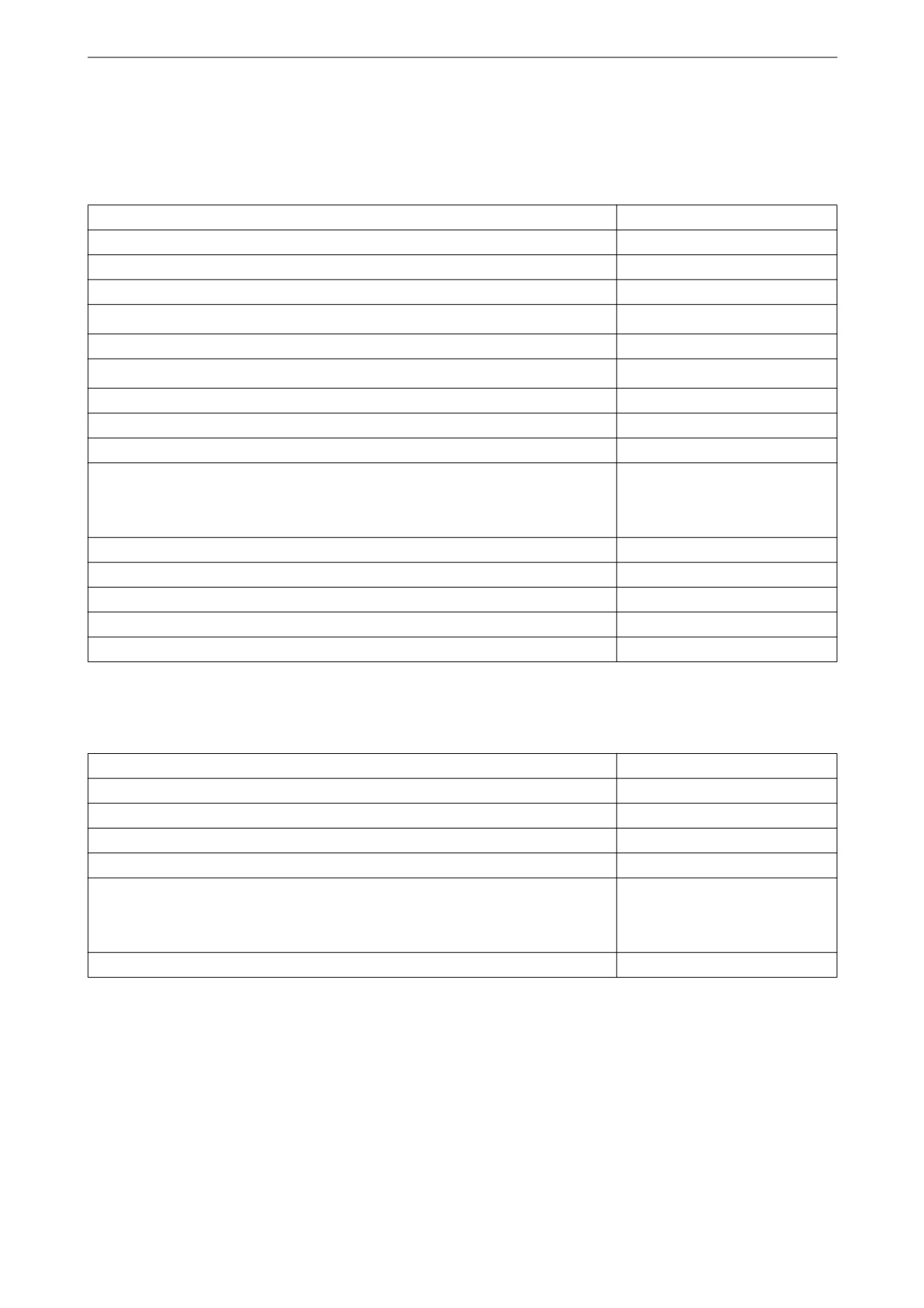
Technical data
Technical data
General data
Number of cylinders and configuration
5, straight
Working principle
4-stroke engine
Cylinder diameter (mm/in)
130/5.12
Piston stroke (mm/in)
140/5.51
9.3/567.5
Displacement (dm3/in3)
Firing sequence
1 - 2 - 4 - 5 - 3
Compression ratio
16:11
Engine direction of rotation viewed from rear
Anti-clockwise
Fan direction of rotation viewed from front
Clockwise
Cooling
Coolant
Valve clearances, cold engine
Intake valve (mm/in)
0.45/0.02
Exhaust valve (mm/in)
0.70/0.03
Number of teeth on the flywheel
158
Low idling speed (rpm)
500-975
Maximum full-load speed (rpm)
1,800/2,100
Fuel
Diesel
Approximate weight, without coolant and oil (kg/lb)
950/2,094
1. For engines with performance and certification code 076, the compression ratio is 18:1.
Lubrication system
Oil volume
See Maintenance
Oil cleaning
Centrifugal oil cleaning
Oil cooler
Coolant cooled, full flow
Oil filter
Paper filter from Scania
Interval between oil changes (h)
500
Oil pressure (bar/psi)
Normal with the engine at operating temperature, operating speed
3-6/43.5-87
Minimum permitted at idling speed
0.7/10.2
Crankcase pressure with closed crankcase ventilation (mbar/psi)
-5.4 to 2.0/-0.08 to 0.03
70
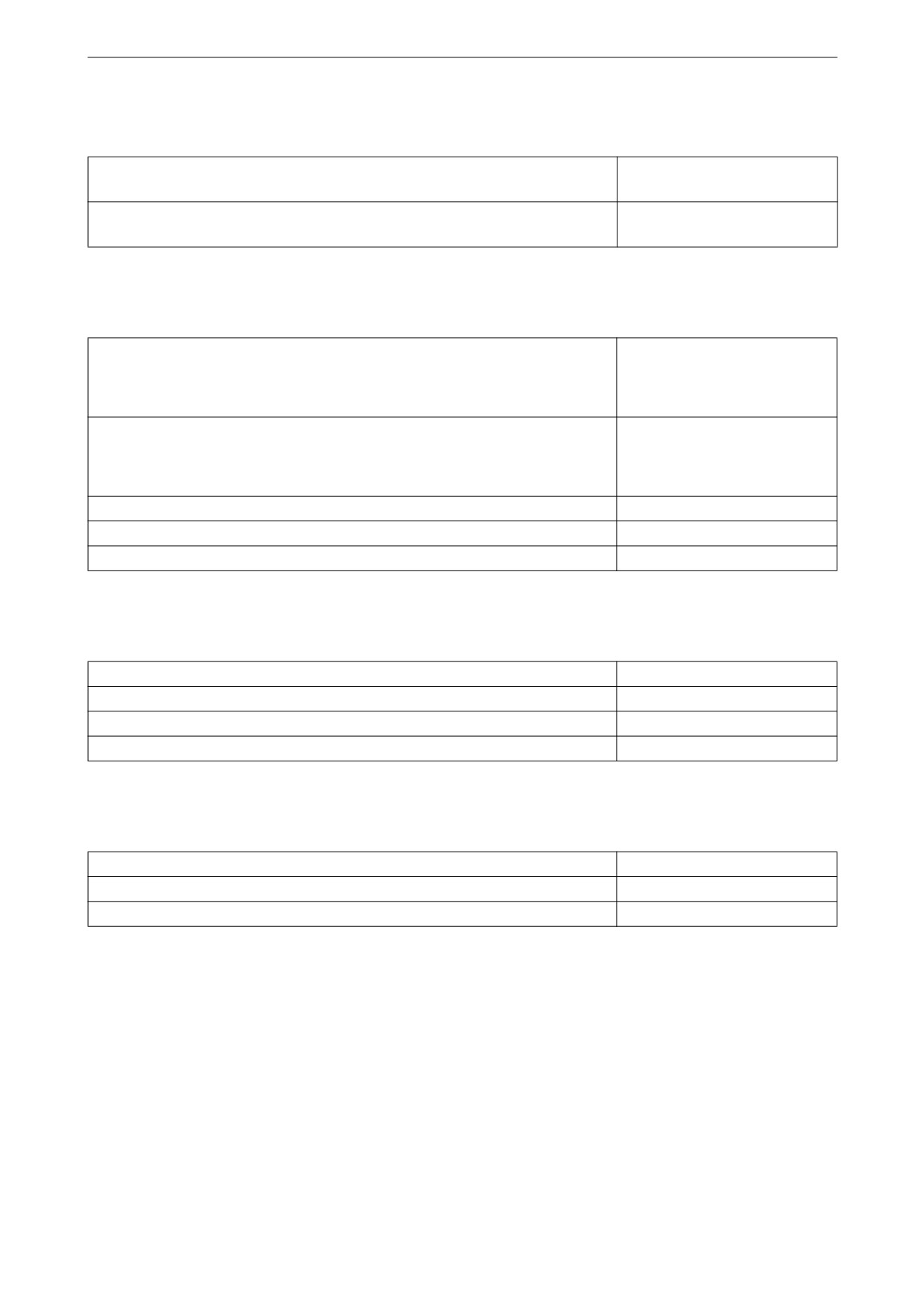
Technical data
Intake system
Permissible pressure drop in the intake system with cleaned or new filter
30/0.44
(mbar/psi)
Permissible pressure drop in the intake system with blocked (dirty) filter
65/0.94
(mbar/psi)
Cooling system
Coolant volume, excluding radiator (dm3/US gallons)
DC09 071A
16/4.2
Other engine types
15/4.0
Coolant volume including 1.1 m2 radiator (dm3/US gallons)
DC09 071A
38/10.0
Other engine types
37/9.8
Coolant temperature (°C/°F)
90-95/194-203
Number of thermostats
1
Thermostat opening temperature (°C/°F)
80/176 and 87/189
Fuel system
Injection system
PDE (unit injector)
Engine management system
EMS
Fuel filter
Paper filter from Scania
Water separating prefilter
Paper filter from Scania
Electrical system
Type
1-pin, 24 V, DC
Starter motor, standard equipment
1-pin, 24 V, 6 kW
Alternator, standard equipment
1-pin, 28 V, 100 A
71
Scania Assistance
Scania Assistance
Wherever you are, you can always get assistance
from the Scania service organisation, Scania As-
sistance, all day, every day of the year.
Always call the contact for your country.
Country
Tel
Country
Tel
Austria
+43 1 256 44 11
Latvia
+371 29 44 24 24
America
+1 (0) 800 272 2642
Lithuania
+46 8 52 24 24 24
America
1 800 272 2642
Luxembourg
+32 2 264 00 00
Argentina
800 999 722 642
Malaysia
1800 08 8500
Australia
+611300722642
Malaysia
+6035590907
Belgium
+32 2 264 00 00
Mexico
+543327451092
Botswana
+267 72 102 591
Morocco
+3222640000
Brazil
+8000194224
Namibia
+264634461352
Bulgaria
+359 88 666 0001
Netherlands
+31 76 52 54 111
Chile
188 800 722 642
Norway
+47 223 217 00
Colombia
+1800184548
Peru
0800-51-727
Czech Republic
+420 225 020 225
Peru
(01)512-1877
Denmark
+45 333 270 44
Poland
+48 22 331 22 33
Estonia
Tallinn:+372 5153 388
Portugal
+34 91 678 9247
Estonia
Tartu:+372 5126 333
Romania
+40 723 27 27 26
Estonia
Pämu:+372 5071 477
Russia
+7(495) 925 77 75
Estonia
Rakvere:+372 5074 655
Singapore
+6565917180
Finland
+358 10 555 24
Slovakia
+421 903 722 048
France
+33 2 414 132 32
South Africa
0 800 005 798
Germany
+49 261 887 8888
South Africa
+27 11 226 5005
Great Britain
0 800 800 660
Spain
+34 91 678 80 58
Great Britain
+441274301260
Sweden
+46 42 100 100
Hungary
+36 209 727 197
Switzerland
+41 800 55 24 00
Ireland
+353 71 963 4000
Thailand
+66819397525
Italy
+39046 1996222
Thailand
+1800 019 88
Latvia
+46 8 52 24 24 24
Uruguay
0 800 835 1
Other countries: +46 8 52 24 24 24
Note:
Calls will be recorded for training purposes.
72
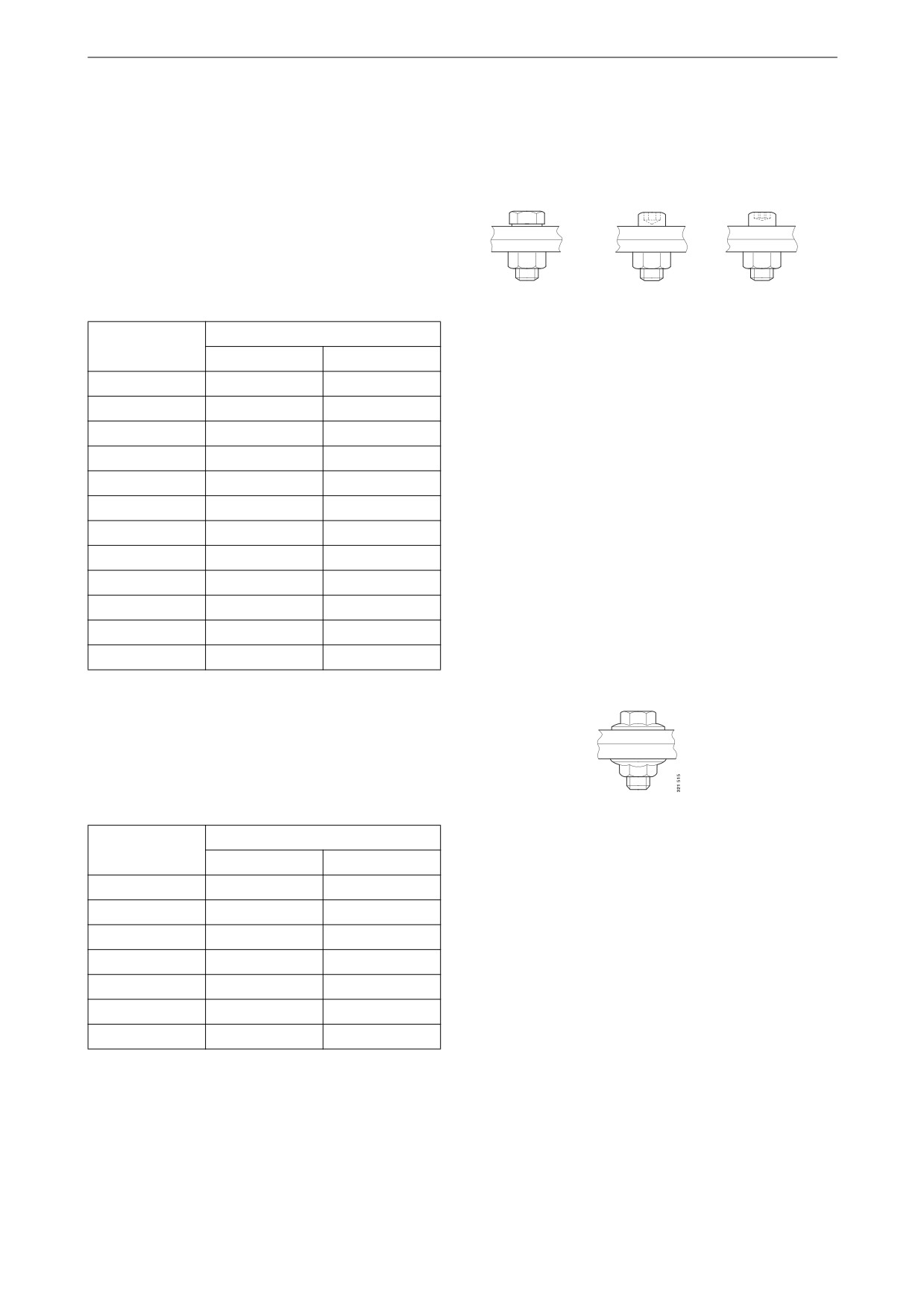
General tightening torques for screw joints
General tightening torques
for screw joints
Hexagon screws, hexagon
socket screws, Torx screws,
hexagon nuts
Metric thread. Strength class 8.8/8.
Tightening torques
Thread
Nm
Lb-ft
M4
2.9
21
M5
6
4
M6
9.5
7
M8
24
18
M10
47
35
M12
84
62
M14
135
100
M16
210
155
M18
290
214
M20
420
310
M22
580
428
M24
730
538
Flange screws with hexago-
nal head and hexagonal
flange nuts
Metric thread. Strength class 8.8/8.
Tightening torques
Thread
Nm
Lb-ft
M5
6.7
5
M6
10.2
8
M8
26
19
M10
50
37
M12
92
38
M14
149
110
M16
184
136
73
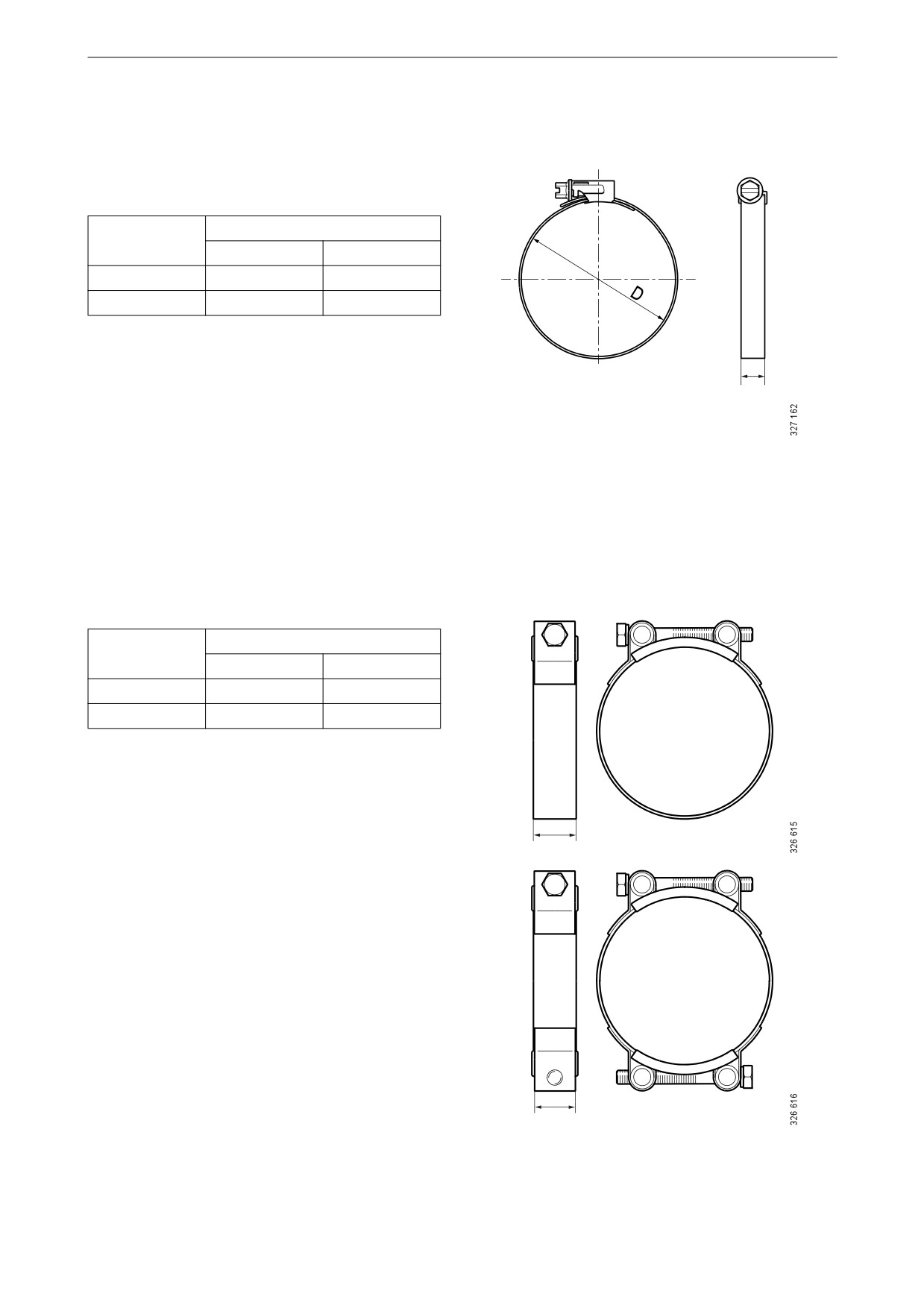
General tightening torques for screw joints
Hose clamps
Specifications in the tables show tightening
torque when tightening by hand.
A = width
Tightening torques
(mm)
Nm
Lb-ft
7.5-9
1.5
1
12
5
4
A
Tightening torque for new unfitted hose clamp is
max 1 Nm (0.7 lb-ft).
A = width
Tightening torques
(mm)
Nm
Lb-ft
20
10
7
25
20
15
A
A
74